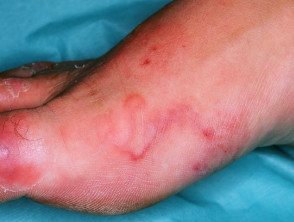

At present, relatively little is known about the immune responses to hookworm infection, although it has recently been speculated that hookworm and other helminths may modulate specific immune responses to other pathogens and vaccines. Advances in molecular biology has lead to the identification of a variety of new molecules from hookworms, which have importance either in the molecular pathogenesis of hookworm infection or in the host-parasite relationship some are also promising vaccine targets.

This article reviews recent advances in our understanding in the biology, immunology, epidemiology, public health significance and control of hookworm, and to look forward to the study of this important parasite in the 21 st century. In recent years, there have been dramatic improvements in our understanding of many aspects of this globally widespread parasite. If you have further questions or concerns about hookworms, remember your veterinarian is always there to see that you get the answers you need.The scientific study of human hookworm infection began at the dawn of the twentieth century. Very young pets are at highest risk for blood so it is important to deworm regularly. Hookworms are significant parasites in both dogs and cats and constitute a human hazard as well.

There are numerous products approved for the treatment of feline hookworm infection: ivermectin, milbemycin oxime, emodepside (active ingredient in Profender®), selamectin, and moxidectin. The Companion Animal Parasite Control Council recommends deworming kittens beginning at age three weeks with pyrantel pamoate. A scuttling bug can be a tempting toy for a cat in particular and if eaten, the cockroach can transmit hookworm larvae it is carrying.
Treatment for feline hookworms in humans skin#
Cats are generally infected by larvae invading the skin or by eating an infected prey animal.īoth dogs and cats can be infected by eating a vertebrate host such as a rodent. Kittens cannot be infected before birth nor can they be infected by nursing. There are a few differences between cats and dogs with hookworms: There are two species of hookworms in cats: Ancylostoma tubaeforme and Ancylostoma braziliense. Local restrictions on bringing dogs to beaches and the strict clean-up laws reflect concern for hookworm (and roundworm) infection in people. Hookworm infection in the skin is intensely itchy but usually treatable. Hookworms is a zoonotic disease-can infect humans. The Companion Animal Parasite Council has recommended automatically deworming puppies for hookworms beginning at age two weeks in areas where hookworms are common. Treatment involves deworming with one of several products: mebendazole (Telmintic®), milbemycin (Interceptor®), moxidectin (Coraxis®), fenbendazole (Panacur®), pyrantel pamoate (Nemex®, Drontal®, or Strongid T®) and others. Infected puppies are commonly pale, weak, and have long-standing deficiencies. Hookworm infection is frequently lethal to young puppies. The egg hatches in the environment and develops from a first stage larva (the hatchling) to a second stage larva and finally a third stage larva, which is ready to infect a new host. Hookworm larvae can be swallowed when the dog licks contaminated dirt from his feet. The adult hookworm lives in the small intestine of its host where it hangs on to the intestinal wall using its 6 sharp teeth.


 0 kommentar(er)
0 kommentar(er)
